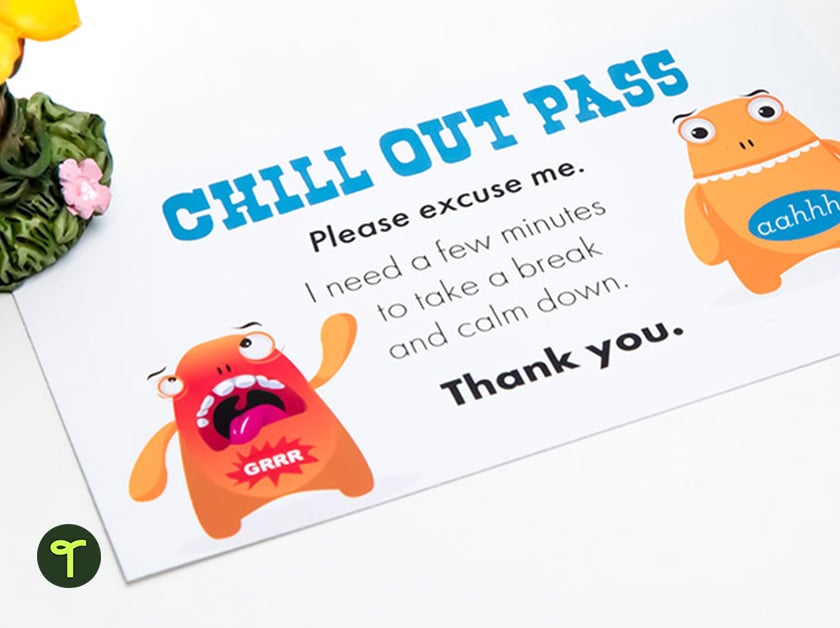Calm classrooms are places where students can learn. After all, would we really expect kids to pay attention and engage with the work at hand when there was chaos going on around them? Are you looking to make your classroom more peaceful and calm and find some calm activities for your students?
The teachers on the Teach Starter team have looked back on our collective decades in the classroom to create this guide with every answer you may need for that “how to create a calm classroom” question!
Why Is a Calm Classroom Important?
It’s something educators have been saying for years: The learning environment matters. And there’s solid research to back this up: When The Research Alliance for New York City Schools looked at school organizational contexts, teacher turnover, and student achievement in New York City, for example, the researchers found a direct link between the organization of the learning environment and student achievement.
Experts have likewise found that everything from how you decorate your classroom to classroom acoustics will have an impact on students and their ability to learn.
So we know what you’re going to ask us …
How Do You Create a Calm Classroom?
Decorate With Intention
It’s tempting to go all out with your bulletin boards and classroom decorating, and it can be a lot of fun to do so. But at the end of the day, going overboard with the decorations can be distracting to little learners who can’t handle all the visual stimulation and stay on task. It turns out more muted tones are better than some of the wild ones we may love ourselves. Not to mention all the work that goes into decorating steals your precious time!
Instead of feeling pressured to go wild with decor, remember that everything you hang in your classroom should add to the learning experience.
Instead, consider these types of decor:
- Displays that scaffold learning such as anchor charts, focus walls, and diagrams
- Displays of student work that empowers them and helps them feel like valued members of the classroom community
Add Plants
There are plenty of studies that indicate indoor plants provide a number of benefits for health, well-being, and work performance. That’s not just good for you the teacher, but they can also help make your classroom a calm space for your students too.
Make your classroom plant part of a lesson with this free plant observation printable!
Employ Flexible Seating
Flexible seating has myriad benefits, but allowing students to sit in a manner that works best with their needs is at the very top of the list. Kids who are comfortable are kids who are more engaged with learning … and less likely to cut up in class.
Give Students Space to Chill Out
Set up a chill out corner in the classroom, and provide students with access to “chill out passes” when they need to take some time away from their classmates. Providing students with these outlets to use when they’re feeling angry or upset will help them learn self-regulation and help maintain calm.
Let in the (Natural) Light
Fluorescent lighting has long been linked to eye strain and even problematic student behavior. You may not have much control over the types of lighting in your classroom, but you can open the curtains and opt to use natural light as much as possible. Not only will this reduce the impacts of those buzzing bulbs above your head, but there are positive effects to be found on students’ moods.
Can’t turn off all the lights? Try this calm classroom trick: Shut off half of them (if possible). When possible, try to take your class outside — weather permitting, of course!
Play Calming Music
Using music in the classroom is known to enhance certain forms of intelligence, like verbal and spatial abilities. Some teachers have even found that playing Mozart in the classroom environment has helped with concentration and attentiveness.
And yes, it can help make a calm classroom — moving the brain to pay attention and focus.
Routines, Routines, Routines
To set your students up for success, create predictable routines in the classroom to give students confidence, independence and reduce anxiety. Using visual schedules can also assist with successful transitions between activities, decreasing transition time and challenging behaviors.
Teach Strategies for Calming Down
Even as adults, sometimes we get overwhelmed and have a hard time regulating emotions. But for our students, it can be even more difficult as they’re still developing the skills to manage their feelings.
It’s important to spend time on social and emotional learning during the school year and to provide students with strategies they need to help them learn to regulate their own emotions.
Teach Starter Teacher Tip: Post a calm down strategies poster that students can refer to when they need a little extra help.
These resources may also help:
[resource:4454849][resource:4387270][resource:3307426]
Employ Mindfulness Activities
Whether it’s setting up mindfulness activities for your fast-finishers or adding a regular yoga break to help your students recenter, the key to creating a calm classroom is ensuring you provide your students with the tools they need to find peace and calm!
What do you do in your classroom to promote a calm environment for learning?
Banner image via shutterstock/New Africa








Comments